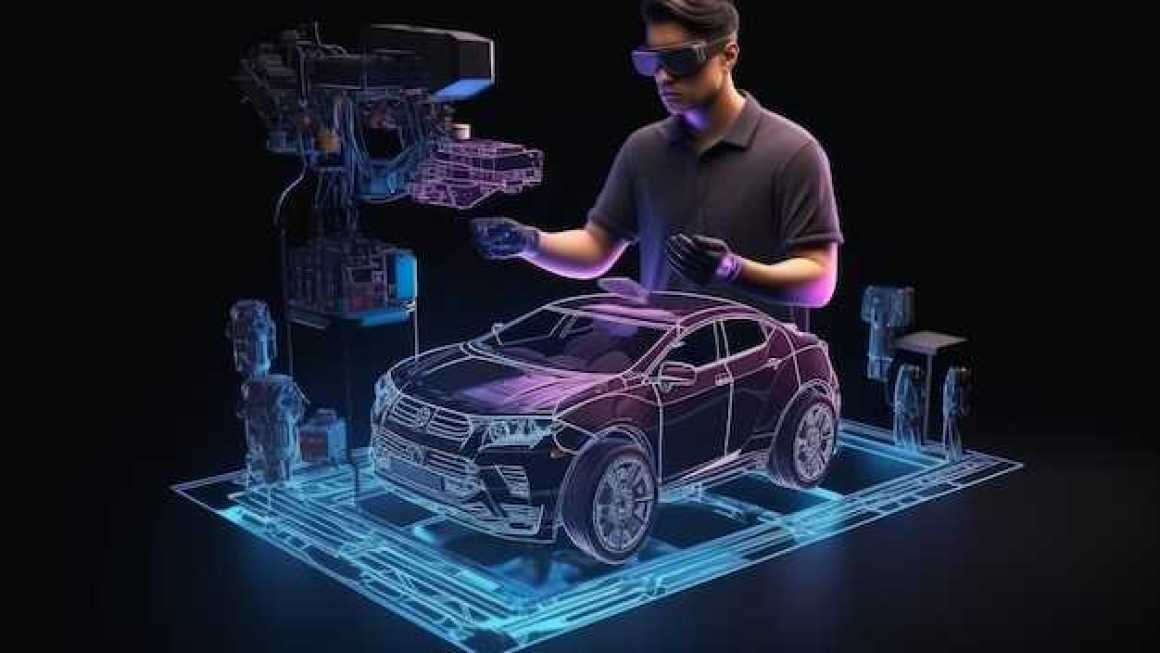
In the rapidly evolving automotive industry, the integration of advanced technology has transformed the way vehicles operate and interact with their drivers. One of the most significant innovations in recent years has been the implementation of over-the-air (OTA) software updates. This technology enables car manufacturers to remotely deliver software enhancements, fixes, and new features directly to vehicles over the internet.
The role of software in modern cars extends far beyond entertainment and navigation systems. Today, critical functions such as engine management, safety features, and driver-assistance systems rely on sophisticated software algorithms. OTA updates allow manufacturers to improve vehicle performance, address security vulnerabilities, and ensure compliance with evolving regulatory standards without requiring physical service visits.
As the automotive landscape continues to shift towards electric and connected vehicles, understanding the mechanics and implications of OTA software updates becomes essential. This article will explore the benefits, challenges, and future potential of OTA updates in the automotive sector, shedding light on how this technology is reshaping the driving experience.
How OTA Updates Enhance Vehicle Performance and Safety
Over-the-air (OTA) updates are becoming a vital technology in the automotive industry, providing numerous enhancements to vehicle performance and safety. These updates allow manufacturers to remotely deploy software improvements and new features directly to vehicles, eliminating the need for physical visits to service centers.
One significant advantage of OTA updates is the ability to optimize vehicle performance. Manufacturers can fine-tune engine settings, transmission responses, and suspension systems without requiring owners to bring their cars in for service. This ensures that vehicles can continually perform at their best, adapting to changes in environmental conditions and driving behavior.
Moreover, OTA updates play a crucial role in enhancing safety features. As automotive technologies evolve, manufacturers can address potential vulnerabilities and bugs in the software. For instance, if a safety system, such as automatic emergency braking, requires recalibration, an OTA update can be deployed to ensure the system functions correctly and reliably. This proactive approach leads to improved collision avoidance and overall driver and passenger safety.
Another aspect of safety improvement through OTA updates is the ability to keep vehicular software aligned with regulations. As rules evolve, manufacturers can quickly update their systems to comply with new safety standards, ensuring that vehicles remain roadworthy and legal.
Furthermore, these updates can also introduce new safety features. For example, software enhancements may enable advanced driver assistance systems (ADAS) to leverage the latest algorithms for better object detection and response times. This continuous development keeps vehicles competitive in the market and enhances user trust in the manufacturer’s commitment to safety.
In summary, OTA updates are pivotal in advancing automotive performance and safety, enabling manufacturers to deliver timely enhancements and maintain optimal functionality. They provide a seamless way to adapt vehicles to the latest technological advancements while ensuring driver and passenger security.
Key Security Considerations for Automotive OTA Update Systems

As the automotive industry increasingly adopts Over-the-Air (OTA) update systems, several security considerations become paramount to ensure integrity, confidentiality, and availability of software updates.
First, establishing a robust authentication mechanism is essential. This ensures that only authorized entities can initiate updates. Utilizing secure cryptographic protocols, such as digital signatures, can help verify the legitimacy of the software source before installation on a vehicle.
Second, data integrity must be guaranteed throughout the update process. Implementing hash functions and checksums allows the system to detect any tampering or corruption during transmission. Any discrepancies would automatically flag the update as potentially malicious, preventing unauthorized modifications from being applied to vehicle systems.
Third, the confidentiality of the update files is crucial. Employing encryption during transmission protects sensitive data from interception by malicious actors. This not only safeguards intellectual property but also ensures that vehicle security features remain uncompromised.
Fourth, robust backup and recovery mechanisms should be integrated into OTA systems. In the event of a failed update, vehicles should be able to revert to a previous stable version of the software to prevent disruption of critical functionalities. This capability can enhance user trust and vehicle safety.
Additionally, ensuring that OTA updates are conducted over secure and reliable communication channels is vital. Using Virtual Private Networks (VPNs) or dedicated protocols can reduce the risk of man-in-the-middle attacks that could potentially exploit vulnerabilities during the update process.
Finally, continuous monitoring and auditing of the OTA system can identify potential security gaps and anomalies. Implementing logging mechanisms helps track update deployments and user interactions, allowing for timely responses to suspected security incidents.
In summary, focusing on authentication, data integrity, confidentiality, recovery mechanisms, secure communication, and continuous monitoring is essential for developing resilient automotive OTA update systems. Addressing these security considerations will significantly enhance the overall trustworthiness and safety of connected vehicles.
Real-World Examples of Successful OTA Implementations in Modern Vehicles

Over-the-Air (OTA) software updates have become a pivotal element in the automotive industry, enabling manufacturers to enhance vehicle performance and add new features without requiring physical service visits. Several automakers have successfully integrated OTA technology into their vehicles, showcasing its advantages.
Tesla is one of the most prominent examples of successful OTA implementations. The company routinely rolls out software updates that improve battery efficiency, enhance autopilot features, and offer new entertainment options. These updates ensure that Tesla owners benefit from continuous improvements, driving a dynamic ownership experience.
Ford has also embraced OTA updates through its FordPass app. With its Ford F-150 and Mustang Mach-E models, the company has demonstrated its ability to deliver software updates that enhance vehicle capabilities. Recent updates have improved range optimization and added new navigation features, showcasing how OTA updates can directly impact user satisfaction.
Volkswagen is integrating OTA updates within its ID. family of electric vehicles. This approach enables the update of various software systems, including infotainment and battery management systems, ensuring that the vehicles remain up to date with the latest technologies and features. The success of this initiative illustrates the potential of OTA technology in improving EV performance and user experience.
Audi‘s vehicles also utilize OTA updates to enhance user convenience and safety. Their system allows for the updating of navigation systems, infotainment features, and various performance optimizations. This flexibility has proven particularly beneficial in maintaining the vehicle’s competitive edge in a rapidly evolving market.
These examples illustrate that successful OTA implementations can lead to significant enhancements in vehicle functionality, safety, and user experience. As the automotive industry continues to evolve, embracing OTA technology will be crucial for manufacturers aiming to meet the demands of modern consumers.



